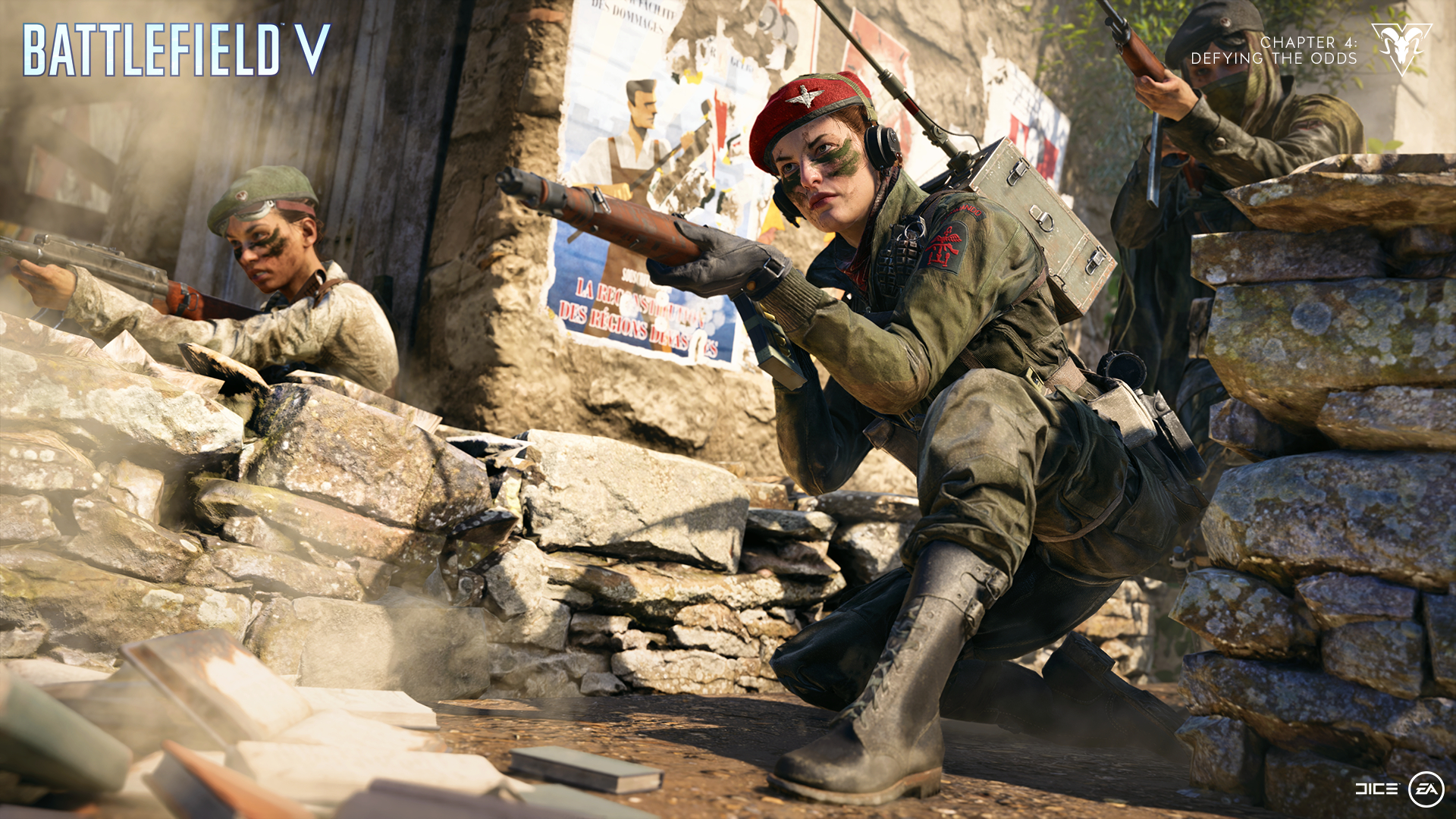What is ray tracing? The games, the graphics cards and everything else you need to know
The holy grail of gaming graphics has arrived

Ever since Nvidia Turing was announced back at Gamescom 2018, ray tracing has been the talk of the town. This rendering method has long been the holy grail of graphics technology, but finally with graphics cards like the Nvidia GeForce RTX 2080, you can see this tech in the latest and greatest PC games.
Ray tracing, then, may be one of the most significant graphics upgrades that we’ve seen in the gaming landscape in years – or, at least it will be once we see it implemented in more actual PC games.
So, what even is ray tracing? Well, it's an advanced and lifelike way of rendering light and shadows in a scene. It's what movies and TV shows use to create and blend in amazing CG work with real-life scenes. However, because ray tracing works by simulating and tracking every ray of light produced by a source of lighting, it kind of takes a lot of horsepower to actually render. This is the main reason we haven’t seen ray tracing implemented in actual games – until now.
These days, ray tracing is actually achievable in PC games, and yet the biggest titles to implement this technology only use it in limited ways, like rendering realistic reflections or shadows. We still haven’t seen a fully ray-traced game.
However, thanks to Nvidia’s DXR Spotlight contest, game developers and content creators were able to showcase just what this technology is capable of – from ray-traced reflections and shadows to ambient occlusion and illumination to produce life-like effects, even in real time.
Now that ray tracing is the hot new technology behind the biggest PC games, we thought it was about time to dive into exactly what it is, how to do it, and the best ray tracing games. And, because we keep hearing more and more about this technology every single day, we’ll be sure to keep this guide updated with all the latest and greatest ray tracing news, so be sure to keep this page bookmarked.
What is ray tracing?
Ray tracing is a rendering technique that can produce incredibly realistic lighting effects. Essentially, an algorithm can trace the path of light, and then simulate the way that the light interacts with the virtual objects it ultimately hits in the computer-generated world.
Sign up for breaking news, reviews, opinion, top tech deals, and more.
We've seen in-game lighting effects become more and more realistic over the years, but the benefits of ray tracing are less about the light itself and more about how it interacts with the world.
Ray tracing allows for dramatically more lifelike shadows and reflections, along with much-improved translucence and scattering. The algorithm takes into account where the light hits and calculates the interaction and interplay much like the human eye would process real light, shadows, and reflections, for example. The way light hits objects in the world also affects which colors you see.
With enough computational power available, it's possible to produce incredibly realistic CG images that are nearly indistinguishable from real life. But that's the problem: even a well-equipped gaming PC only has so much GPU power to work with, let alone a modern game console.
Ray tracing is used extensively when developing computer graphics imagery for films and TV shows, but that's because studios can harness the power of an entire server farm (or cloud computing) to get the job done. And even then, it can be a long, laborious process. Doing it on the fly has been far too taxing for existing gaming hardware.
Traditionally, video games have used rasterization instead. This is a speedier way to render computer graphics. It converts the 3D graphics into 2D pixels to display on your screen, but rasterization requires shaders to depict realistic lighting. Luckily, we’re starting to see a lot of PC games take advantage of the specialized hardware in the latest Nvidia graphics cards to use real time ray tracing instead, though rasterization will still be needed in most games, at least until it’s feasible to fully ray trace lighting engines in games.
So, even if right now the results aren’t super mind-blowing, we’re seeing a groundwork being laid out that should lead to some incredible effects. We could see a total revolution in the way PC games are rendered, and we’re at the ground floor right now.

Ray tracing games
Right now, there are only 5 games that use Nvidia ray tracing tech, and only a few big name AAA titles. However, because this is the hot new graphics technology on the block, you can expect plenty more ray tracing games to show up over the next year or so. And, if the PS5 and Xbox Project Scarlett have large libraries of ray traced games, you can bet your bottom dollar that the PC will get them too. Here are all the ray tracing games you can play right now, and the flavor of RTX effects they use.
- Battlefield V – Ray traced reflections
- Metro Exodus – Ray traced global illumination
- Shadow of the Tomb Raider – Ray traced shadows
- Stay in the Light – Ray traced global illumination and reflections
- Quake II RTX – Ray traced global illumination
Now, admittedly that’s not a lot of games that showcase Nvidia’s premiere technology, but don’t worry – there are plenty of other games that will soon use ray tracing. For instance, Remedy’s Control will use Nvidia’s RTX tech to great effect, with ray traced reflections, shadows and global illumination – you can expect this game to be gorgeous, and it may even melt your computer (in a good way).
And, at Gamescom 2019, we got a look at a ton of new games that will be implementing this technology, and how it will look in each of these games. Nvidia isn't holding any developer back, and we're starting to see some incredibly powerful implementations of the technology. For instance, Minecraft will have fully path-traced lighting. We were able to get our hands on the extremely popular game and we can honestly say that it completely transforms the way the game looks.
Even now that we have a larger roster of upcoming games that are featuring the technology, we have a better idea of what ray tracing in games will look like. Still, because the technology is so new, we're sure that developers will keep finding ways to surprise us. Until then, though, here are all the announced ray tracing games coming in the future.
- Cyberpunk 2077
- Call of Duty: Modern Warfare – Ray traced shadows and ambient occlusion
- Control – Ray traced reflections, ray traced global illumination and ray traced shadows
- Enlisted
- Justice Online
- MechWarrior V
- Wolfenstein Youngblood – Ray traced reflections
- Vampire: The Masquerade – Bloodlines 2 – Ray traced reflections
- Watch Dogs: Legion – Ray traced reflections
- Minecraft – Fully path-traced lighting
- Synched: Off Planet – Ray traced reflections, ray traced shadows
Either way, we’re sure many more developers are willing to jump on the ray-traced bandwagon, and we’ll update this page just as soon as we hear of any others.

Ray tracing graphics cards
In 2019, the only graphics cards that support real time ray tracing come from Nvidia. AMD has said that it wants to tackle ray tracing at some point in the future, and while it will technically work on AMD graphics cards, it will turn any game you enable it in into a veritable slideshow.
With that, we’d advise going with at least an Nvidia GeForce RTX 2060 if you want to live your life ray traced. However, if you can fork over the cash for something like the Nvidia GeForce RTX 2080 Ti, you’re going to have a much better experience – which might make up for the giant hole in your wallet.
So, we went ahead and gathered up all the graphics cards that officially support real time ray tracing down below. Spoilers: they all have “RTX” in the name.
- Nvidia GeForce RTX 2060 | 30 RT cores | 6GB GDDR6
- Nvidia GeForce RTX 2060 Super | 34 RT cores | 8GB GDDR6
- Nvidia GeForce RTX 2070 | 36 RT cores | 8 GB GDDR6
- Nvidia GeForce RTX 2070 Super | 40 RT cores | 8GB GDDR6
- Nvidia GeForce RTX 2080 | 46 RT cores | 8GB GDDR6
- Nvidia GeForce RTX 2080 Super | 48 RT cores | 8GB GDDR6
- Nvidia GeForce RTX 2080 Ti | 68 RT cores | 11GB GDDR6
- Nvidia Titan RTX | 72 RT cores | 24GB GDDR6

Ray tracing performance
Without getting into any specific charts and numbers – though we will update this article with those in the near future – it’s easy to see that enabling these eye-catching effects will impact your gaming performance in a huge way. It’s not uncommon to see massive frame drops when enabling these effects.
For instance, in Metro Exodus at 3,440 x 1,440 with the ‘Extreme’ preset we get around 41 fps with an Nvidia GeForce RTX 2080 Ti, however, once we enable ray tracing with the Ultra setting, performance plummets, averaging around 23 fps. It’s definitely still playable, but you can feel the cut to frame rates. Luckily, this game uses DLSS technology, which essentially uses AI to upscale from a lower resolution. And, if you enable this option, you can get more fps: for instance in the same Metro Exodus test with Extreme quality settings and ray tracing on Ultra, we got up to 44 fps with DLSS enabled.
So, essentially, if you’re looking to enable ray tracing, you’re going to have to be conservative with your resolution. If you’re looking to play ray traced games at 4K, you’ll absolutely need a 2080 Ti in your computer. However, if all you can justify is an Nvidia GeForce RTX 2060, then you should have no problems getting playable performance at 1080p with ray tracing enabled.
- We'll show you how to build a gaming PC

Jackie Thomas is the Hardware and Buying Guides Editor at IGN. Previously, she was TechRadar's US computing editor. She is fat, queer and extremely online. Computers are the devil, but she just happens to be a satanist. If you need to know anything about computing components, PC gaming or the best laptop on the market, don't be afraid to drop her a line on Twitter or through email.